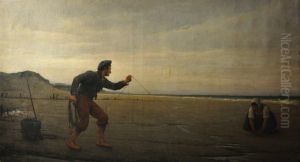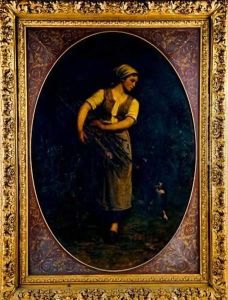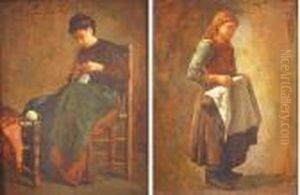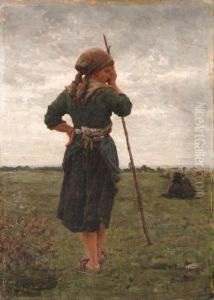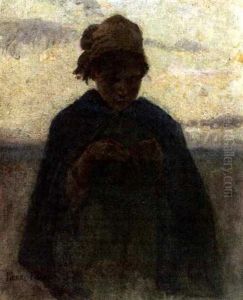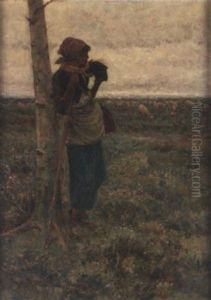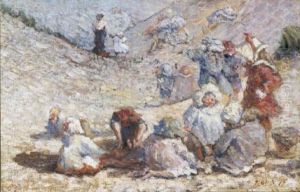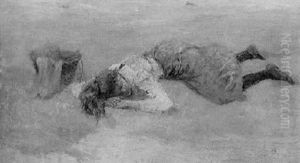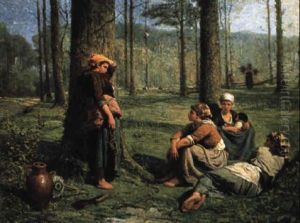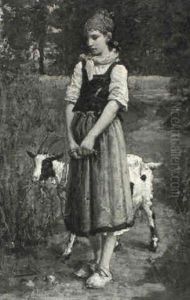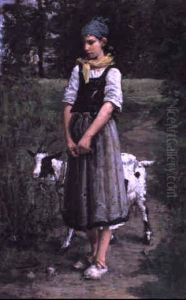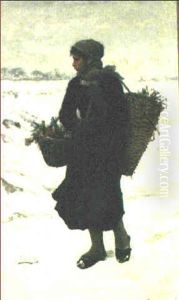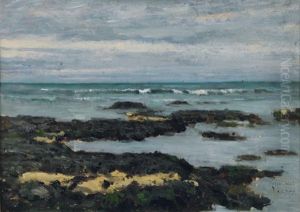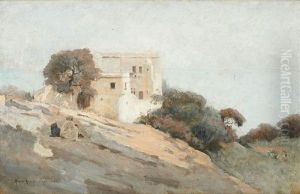Pierre Billet Paintings
Pierre Billet was a French painter known for his genre scenes and landscapes. Born on February 18, 1837, in Varennes-sur-Seine, France, Billet began his artistic training at a young age. He was a student of influential artists of his time, such as Isidore Patrois and Charles Busson, both of whom played a significant role in shaping his early style.
Billet exhibited his work at the Paris Salon, the official art exhibition of the Académie des Beaux-Arts in Paris. His first appearance at the Salon was in 1865, and he continued to exhibit there throughout his career. Billet's paintings often depicted everyday life, capturing moments of tranquility and the simple pleasures of country living. His landscapes were characterized by a delicate use of light and color, which gave his scenes a serene and harmonious quality.
Throughout his career, Billet received recognition for his artistic contributions. His work was appreciated for its charm, attention to detail, and the ability to evoke emotion. Although Billet was not at the forefront of the avant-garde movements of his time, his art remained popular with collectors and the public for its accessibility and beauty.
Pierre Billet's legacy endures through his paintings, which can be found in various museums and private collections. He passed away on December 31, 1922, leaving behind a body of work that continues to be admired for its peaceful and picturesque portrayal of rural French life. Despite not being as widely known as some of his contemporaries, Billet's art captures the essence of the 19th-century French landscape genre and offers a window into the pastoral life of the era.




